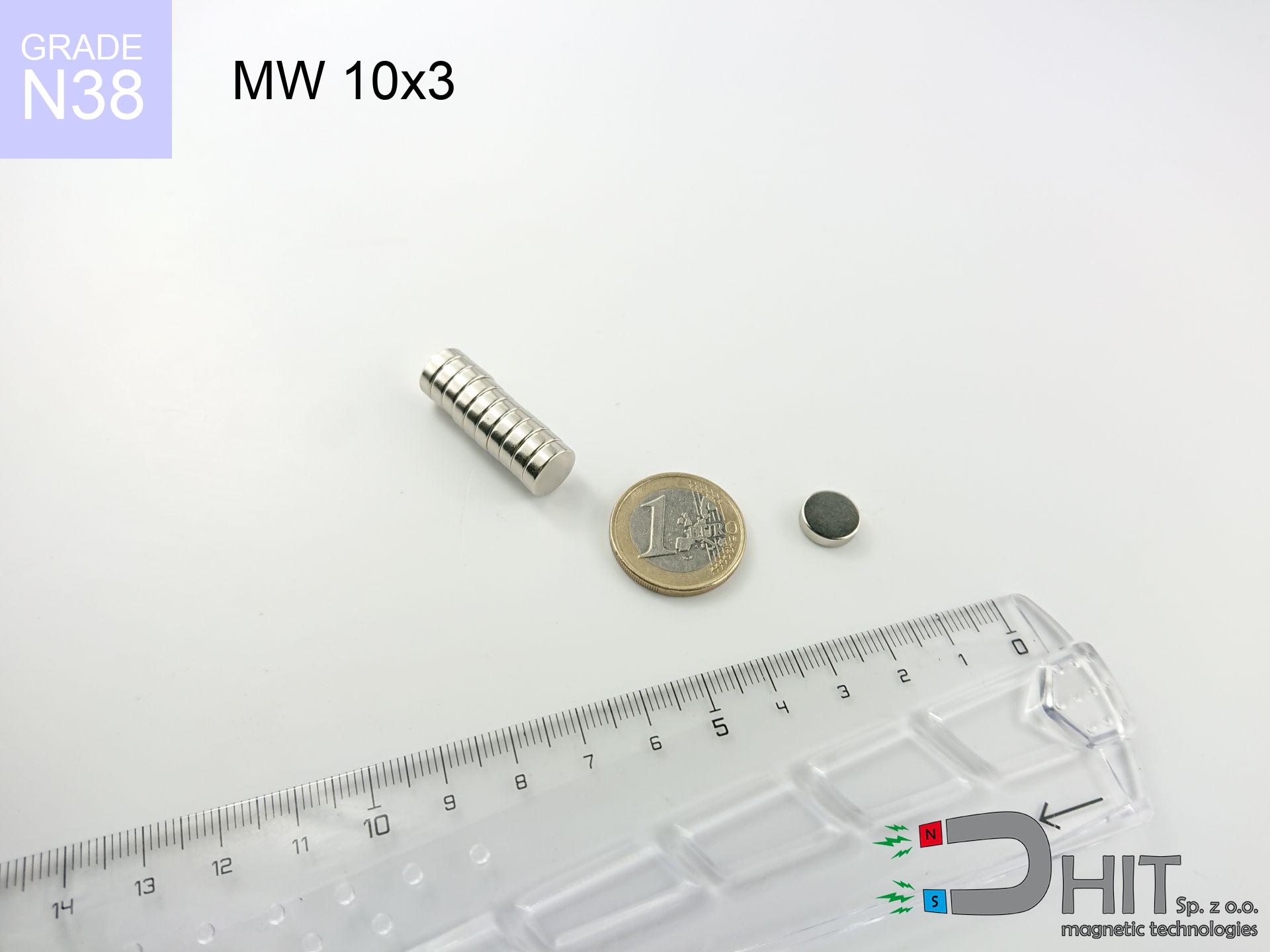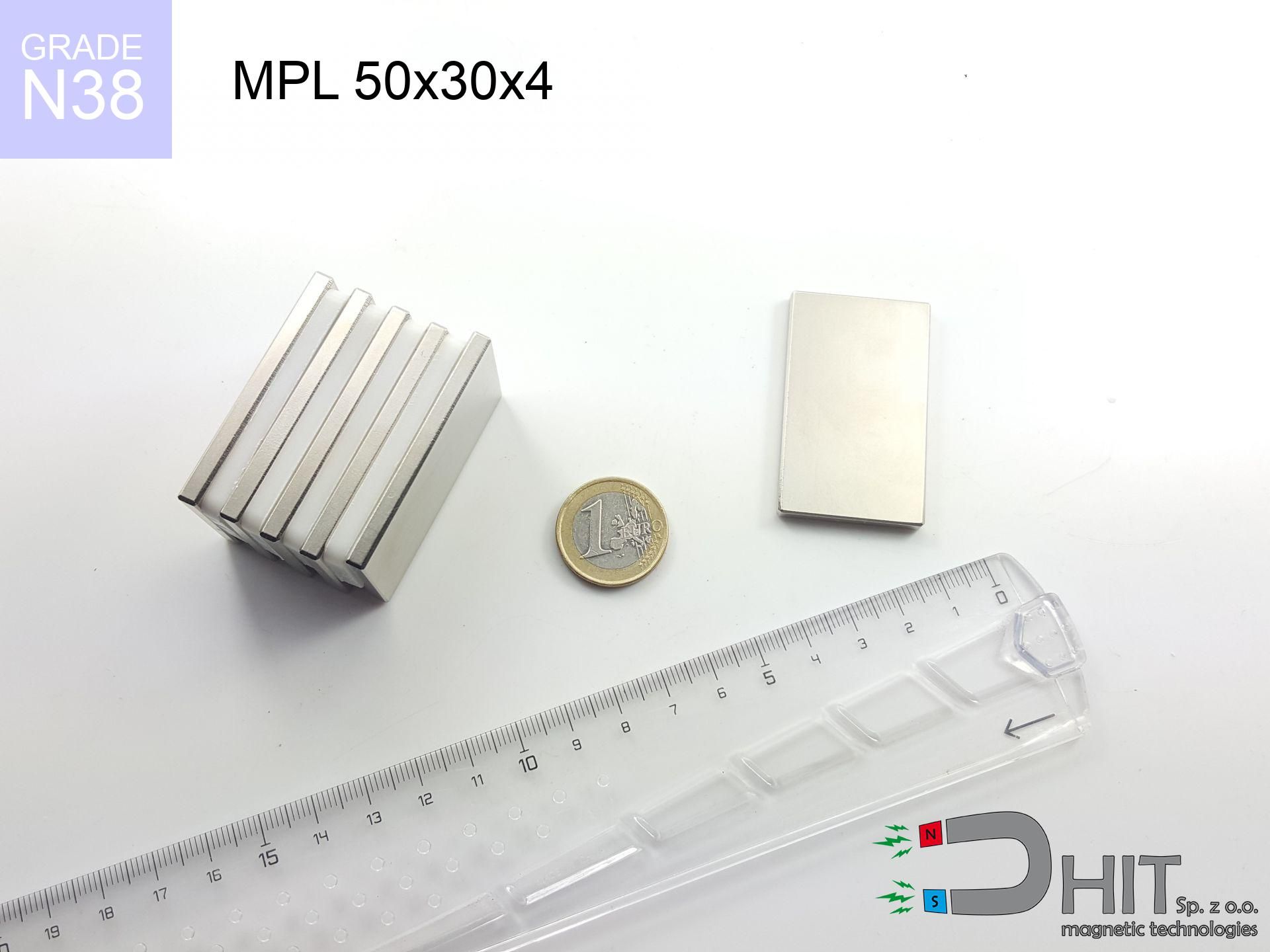SM 25x100 [2xM8] / N42 - magnetic separator
magnetic separator
Catalog no 130287
GTIN/EAN: 5906301812807
Diameter Ø
25 mm [±1 mm]
Height
100 mm [±1 mm]
Weight
360 g
Magnetic Flux
~ 6 500 Gauss [±5%]
246.00 ZŁ with VAT / pcs + price for transport
200.00 ZŁ net + 23% VAT / pcs
bulk discounts:
Need more?
Give us a call
+48 888 99 98 98
otherwise get in touch via
inquiry form
our website.
Force as well as form of magnets can be estimated with our
online calculation tool.
Order by 14:00 and we’ll ship today!
Technical of the product - SM 25x100 [2xM8] / N42 - magnetic separator
Specification / characteristics - SM 25x100 [2xM8] / N42 - magnetic separator
| properties | values |
|---|---|
| Cat. no. | 130287 |
| GTIN/EAN | 5906301812807 |
| Production/Distribution | Dhit sp. z o.o. |
| Country of origin | Poland / China / Germany |
| Customs code | 85059029 |
| Diameter Ø | 25 mm [±1 mm] |
| Height | 100 mm [±1 mm] |
| Weight | 360 g |
| Material Type | Stainless steel AISI 304 / A2 |
| Magnetic Flux | ~ 6 500 Gauss [±5%] |
| Size/Mount Quantity | 2xM8 |
| Polarity | circumferential - 3 poles |
| Casing Tube Thickness | 1 mm |
| Manufacturing Tolerance | ±1 mm |
Magnetic properties of material N42
| properties | values | units |
|---|---|---|
| remenance Br [min. - max.] ? | 12.9-13.2 | kGs |
| remenance Br [min. - max.] ? | 1290-1320 | mT |
| coercivity bHc ? | 10.8-12.0 | kOe |
| coercivity bHc ? | 860-955 | kA/m |
| actual internal force iHc | ≥ 12 | kOe |
| actual internal force iHc | ≥ 955 | kA/m |
| energy density [min. - max.] ? | 40-42 | BH max MGOe |
| energy density [min. - max.] ? | 318-334 | BH max KJ/m |
| max. temperature ? | ≤ 80 | °C |
Physical properties of sintered neodymium magnets Nd2Fe14B at 20°C
| properties | values | units |
|---|---|---|
| Vickers hardness | ≥550 | Hv |
| Density | ≥7.4 | g/cm3 |
| Curie Temperature TC | 312 - 380 | °C |
| Curie Temperature TF | 593 - 716 | °F |
| Specific resistance | 150 | μΩ⋅cm |
| Bending strength | 250 | MPa |
| Compressive strength | 1000~1100 | MPa |
| Thermal expansion parallel (∥) to orientation (M) | (3-4) x 10-6 | °C-1 |
| Thermal expansion perpendicular (⊥) to orientation (M) | -(1-3) x 10-6 | °C-1 |
| Young's modulus | 1.7 x 104 | kg/mm² |
Table 1: Rod construction
SM 25x100 [2xM8] / N42
| Parameter | Value | Description / Unit |
|---|---|---|
| Diameter (Ø) | 25 | mm |
| Total length | 100 | mm (L) |
| Active length | 64 | mm |
| Section count | 2 | modules |
| Dead zone | 36 | mm (2x 18mm starter) |
| Weight (est.) | ~373 | g |
| Active area | 50 | cm² (Area) |
| Housing material | AISI 304 | 1.4301 (Inox) |
| Surface finish | Ra < 0.8 µm | Polished |
| Temp. class | 80°C | Standard (N) |
| Force loss (at max °C) | -12.8% | Reversible loss (physics) |
| Force (calculated) | 10.6 | kg (theor.) |
| Induction (surface) | ~6 500 | Gauss (Max) |
Chart 2: Field profile (2 sections)
Chart 3: Temperature performance
Material specification
| iron (Fe) | 64% – 68% |
| neodymium (Nd) | 29% – 32% |
| boron (B) | 1.1% – 1.2% |
| dysprosium (Dy) | 0.5% – 2.0% |
| coating (Ni-Cu-Ni) | < 0.05% |
Sustainability
| recyclability (EoL) | 100% |
| recycled raw materials | ~10% (pre-cons) |
| carbon footprint | low / zredukowany |
| waste code (EWC) | 16 02 16 |
Other proposals
Pros as well as cons of rare earth magnets.
Strengths
- They retain attractive force for around 10 years – the drop is just ~1% (based on simulations),
- Magnets perfectly protect themselves against demagnetization caused by foreign field sources,
- In other words, due to the metallic layer of nickel, the element gains a professional look,
- Magnetic induction on the top side of the magnet turns out to be exceptional,
- Made from properly selected components, these magnets show impressive resistance to high heat, enabling them to function (depending on their form) at temperatures up to 230°C and above...
- Considering the ability of accurate molding and adaptation to specialized needs, magnetic components can be produced in a variety of shapes and sizes, which expands the range of possible applications,
- Wide application in innovative solutions – they find application in HDD drives, electromotive mechanisms, medical equipment, also other advanced devices.
- Compactness – despite small sizes they generate large force, making them ideal for precision applications
Cons
- To avoid cracks upon strong impacts, we recommend using special steel housings. Such a solution protects the magnet and simultaneously improves its durability.
- NdFeB magnets demagnetize when exposed to high temperatures. After reaching 80°C, many of them experience permanent weakening of power (a factor is the shape and dimensions of the magnet). We offer magnets specially adapted to work at temperatures up to 230°C marked [AH], which are extremely resistant to heat
- Magnets exposed to a humid environment can rust. Therefore when using outdoors, we recommend using water-impermeable magnets made of rubber, plastic or other material protecting against moisture
- Due to limitations in producing threads and complicated forms in magnets, we recommend using casing - magnetic mount.
- Health risk to health – tiny shards of magnets pose a threat, when accidentally swallowed, which is particularly important in the aspect of protecting the youngest. Furthermore, small components of these magnets can disrupt the diagnostic process medical after entering the body.
- Higher cost of purchase is one of the disadvantages compared to ceramic magnets, especially in budget applications
Lifting parameters
Optimal lifting capacity of a neodymium magnet – what contributes to it?
- on a block made of mild steel, effectively closing the magnetic field
- possessing a massiveness of minimum 10 mm to ensure full flux closure
- with a surface free of scratches
- with direct contact (no coatings)
- under axial application of breakaway force (90-degree angle)
- at temperature room level
Lifting capacity in real conditions – factors
- Gap between magnet and steel – even a fraction of a millimeter of separation (caused e.g. by veneer or unevenness) diminishes the magnet efficiency, often by half at just 0.5 mm.
- Angle of force application – highest force is obtained only during perpendicular pulling. The force required to slide of the magnet along the surface is standardly many times lower (approx. 1/5 of the lifting capacity).
- Wall thickness – the thinner the sheet, the weaker the hold. Magnetic flux passes through the material instead of generating force.
- Steel type – low-carbon steel attracts best. Alloy admixtures lower magnetic permeability and holding force.
- Base smoothness – the smoother and more polished the plate, the better the adhesion and higher the lifting capacity. Roughness acts like micro-gaps.
- Thermal environment – heating the magnet results in weakening of force. Check the maximum operating temperature for a given model.
Lifting capacity testing was carried out on a smooth plate of optimal thickness, under perpendicular forces, however under parallel forces the holding force is lower. Additionally, even a minimal clearance between the magnet and the plate reduces the holding force.
H&S for magnets
Immense force
Exercise caution. Rare earth magnets act from a distance and snap with huge force, often faster than you can move away.
GPS Danger
A strong magnetic field negatively affects the operation of magnetometers in smartphones and GPS navigation. Maintain magnets close to a smartphone to prevent damaging the sensors.
Maximum temperature
Monitor thermal conditions. Exposing the magnet to high heat will permanently weaken its properties and pulling force.
Eye protection
Despite metallic appearance, neodymium is delicate and not impact-resistant. Do not hit, as the magnet may crumble into sharp, dangerous pieces.
Do not give to children
Product intended for adults. Small elements pose a choking risk, causing serious injuries. Store away from kids and pets.
Crushing force
Risk of injury: The attraction force is so great that it can result in hematomas, crushing, and broken bones. Use thick gloves.
Magnetic media
Device Safety: Strong magnets can ruin payment cards and delicate electronics (heart implants, hearing aids, mechanical watches).
Sensitization to coating
Medical facts indicate that nickel (standard magnet coating) is a strong allergen. If your skin reacts to metals, refrain from touching magnets with bare hands or opt for coated magnets.
Mechanical processing
Fire hazard: Rare earth powder is highly flammable. Avoid machining magnets without safety gear as this may cause fire.
Medical interference
For implant holders: Strong magnetic fields affect medical devices. Keep at least 30 cm distance or request help to handle the magnets.

![Magnetic bar SM 25x100 [2xM8] / N42 Magnetic bar SM 25x100 [2xM8] / N42](https://cdn3.dhit.pl/graphics/banners/magnet.webp)
![SM 25x100 [2xM8] / N42 - magnetic separator](https://cdn3.dhit.pl/graphics/products/sm-25x100-2xm8-feg.jpg)





